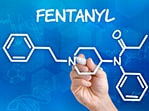EMERGENCY MEDICAL SERVICES WORKERS

Emergency medical services (EMS) workers provide pre-hospital emergency medical care. Their duties create an inherent risk for on-the-job injuries and illnesses. Research shows that EMS workers have high rates of fatal injuries and nonfatal injuries and illnesses.

EMS providers: You are critical to public health and safety. You are also at high risk for injuries and exposures at work. Learn how to protect yourself. Download the award-winning infographic

Learn about results from a 4-year study capturing data from EMS workers treated in emergency departments, and get recommendations to prevent injuries and exposures. Download the fact sheet

NIOSH and the Department of Homeland Security partnered with other federal agencies and ambulance manufacturers to crash-test ambulances. Download the infographic

Get updated recommendations from NIOSH on preventing fentanyl exposure among emergency responders.
Who are EMS workers?
Vital to disaster response, EMS workers include: first responders, emergency medical technicians (EMT), paramedics, and others whose titles may not always suggest their EMS duties. For example, firefighters and nurses may provide pre-hospital emergency care as part of their routine job duties.

The 2020 National EMS Assessment reported a total of 1,030,760 licensed EMS professionals, from emergency medical responders to paramedics, in the United States. This estimate includes paid and volunteer EMS workers.
The 2021 Current Population Survey estimate for the number of employed EMTs and paramedics was 241,000. This estimate is limited to paid EMS workers.
What job hazards do EMS workers face?
EMS workers face many potential job hazards, including:

- Lifting patients and equipment
- Treating patients with infectious illnesses
- Handling hazardous chemical and body substances
- Participating in the emergency transport of patients in ground and air vehicles
How is NIOSH working to prevent EMS injuries and illnesses?
Collaborating with the National Highway Traffic Safety Administration, Office of Emergency Medical Services, NIOSH uses the occupational supplement to the National Electronic Injury Surveillance System ( NEISS-Work ) to collect data on nonfatal injuries and illnesses among EMS workers.
In 2020, there were an estimated 16,900 injuries and illnesses among EMS workers that were treated in U.S. hospital emergency departments. The most recent injury and illness data are described in the data section of this topic page.
There are a number of other coordinated efforts by various Federal agencies to improve occupational safety and health for EMS workers. Information on some of these efforts is available at www.ems.gov.
